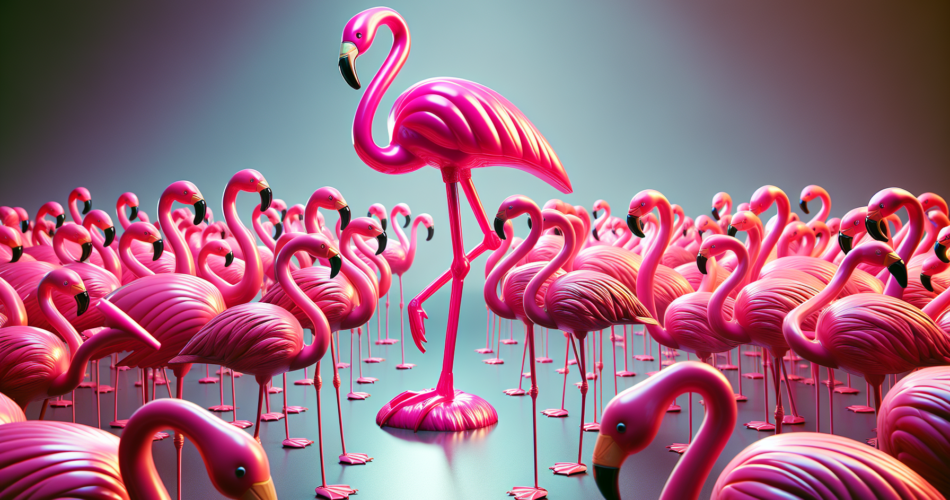The iconic plastic flamingo, a fixture of suburban lawns and pop culture, has transcended its initial role as a mere decorative item to become a symbol of modern kitsch. Originally designed in the 1950s, these vibrant pink birds have found a permanent place in American culture, often overshadowing their living counterparts. This article delves into the cultural significance of plastic flamingos in modern society and explores the evolving public perception that has contributed to their surprising dominance over real flamingos.
The Cultural Significance of Plastic Flamingos in Modern Society
Plastic flamingos have emerged as a representation of the Americana aesthetic, embodying a playful, whimsical spirit that resonates with many homeowners. Their origins can be traced back to the post-war boom when consumerism flourished, and the desire to showcase individuality through lawn decor surged. The plastic flamingo, with its bright colors and exaggerated form, became a staple in suburban landscapes, symbolizing a carefree lifestyle and a sense of belonging to a burgeoning middle class.
Moreover, the plastic flamingo has been embraced by various subcultures, from the kitschy to the avant-garde. Artists and designers have incorporated these plastic icons into installations and fashion, elevating their status from mere garden ornaments to cultural artifacts. This transformation is not solely aesthetic; it reflects deeper societal values, such as the embrace of irony and nostalgia. As modern audiences navigate an increasingly complex and often overwhelming world, the simplicity and humor of plastic flamingos provide a form of escapism and a reminder of simpler times.
In recent years, the rise of eco-consciousness has prompted discussions about sustainability and the impact of plastic on the environment. However, rather than diminishing the appeal of plastic flamingos, this discourse has revitalized interest in them as symbols of both critique and celebration. They have become messages in a bottle—representing the tension between consumer culture and environmental awareness, prompting conversations about the role of plastic in our lives and the nostalgia for a bygone era.
Real vs. Plastic: Analyzing the Shift in Public Perception
The perception of real flamingos has generally been romanticized, portraying them as exotic and elusive creatures that grace tropical landscapes. Traditionally, these birds have been associated with beauty, grace, and a sense of wildness. However, the reality of flamingos’ natural habitat and conservation status often contrasts starkly with their idealized image. As awareness grows regarding the threats facing real flamingos—from habitat loss to climate change—their status as symbols of beauty becomes intertwined with a call for conservation.
Conversely, plastic flamingos have become more than mere caricatures of their real-life counterparts; they have evolved into symbols of human creativity and resourcefulness. While real flamingos exist in the wild, often out of reach for the average person, plastic flamingos are universally accessible and can be displayed with abandon. This accessibility allows individuals to express their identity and playfulness in a way that living animals cannot provide. The dichotomy between the two has sparked a cultural dialogue about authenticity, representation, and the nature of beauty itself.
In addition to accessibility, the rise of social media has played a crucial role in reshaping perceptions of plastic flamingos. Platforms like Instagram and Pinterest have turned these kitschy decorations into viral sensations, showcasing them in creative and unexpected ways. This digital renaissance has allowed plastic flamingos to take on new meanings, often used as symbols of humor and irony in a world that increasingly values authenticity over perfection. As a result, the gap between real and plastic has narrowed, with the latter often being celebrated for its ability to bring joy and personality into everyday life.
The enduring popularity of plastic flamingos in modern society speaks volumes about our cultural values and the complexities of human expression. While real flamingos may symbolize the natural beauty and fragility of wildlife, plastic flamingos provide an avenue for creativity, humor, and reflection on contemporary life. As we navigate the complications of modern existence, the cheerful plastic flamingo stands as a testament to our ability to embrace nostalgia and individuality, proving that sometimes, the artificial can be just as meaningful as the real.

